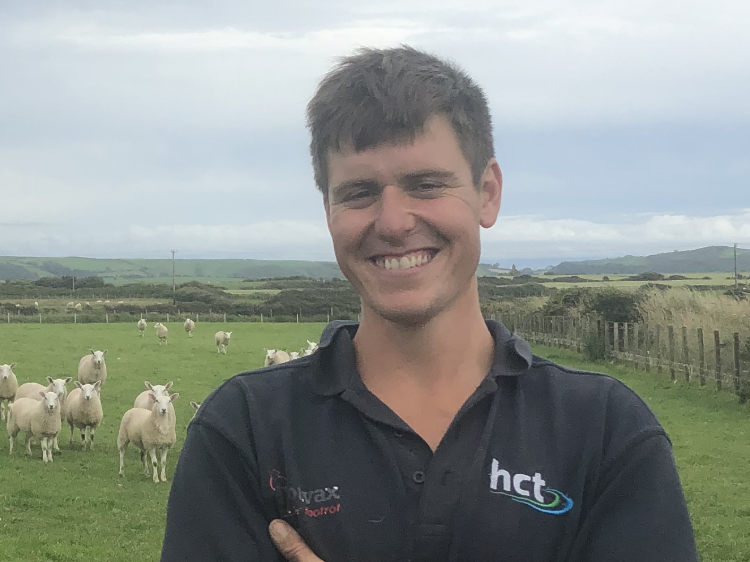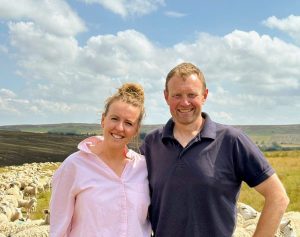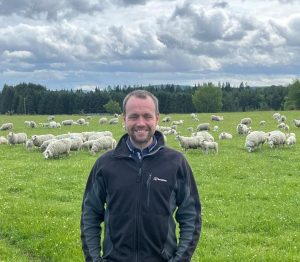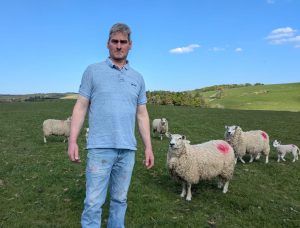by kind permission of Iwan Jones
Iwan Jones is futureproofing his farming business, one that is designed to remain sustainable without the current level of support, he says. “I’m focused on maximising output value from my 700 Welsh ewe flock by introducing the Aberfield combined with rolling out a forage based low management system designed to give me more time for both my scanning and contract fencing business.

“It’s a case of making the most from my own resources. I started off breeding and selling traditional Welsh Mules in small groups using social media, it was job that took up time, but that’s where the bulk of the sheep enterprise income came from,” explains Iwan who returned home from contract shearing in New Zealand 10 years ago to start a scanning business and in turn to develop his own sheep enterprise on 120 acres of permanent rented grassland along with some smaller short term rented parcels, based on the tip of the Llyn peninsular.
“Since introducing the Aberfield maternal sire to two thirds of the flock, I’ve a ready market for the ewe lambs. The majority are weaned in mid-July at 12 weeks, an average 30kg, and they’re all sold within a month. In fact, they can all go – up to 300 head, in one day, on one lorry and in return, I receive one payment. Job done.”
That’s not all. “Whilst the Aberfield cross tup lambs are a by-product, they contribute a significant amount to the business. I’m using Innovis performance data to select for specific traits including growth rate, and these lambs are now finishing to target 18.5kg from 12 weeks, the majority are away off forage by November and 80% are within the R specification. In comparison, our pure Welsh wethers start to finish at lighter weights in November, they need creep, and less than 60% are within spec,” he explains. “We are using EID to record and monitor their weight at weaning and thereafter every three weeks to ensure they’re kept in spec.”
Iwan’s land management policy has also enabled the unit’s carrying capacity to expand from the original 500 to 700 ewes. “I reseed annually 10 acres with a forage rape chicory mix undersown with a three-year ryegrass ley, and it’s grazed by the finishing lambs. However, the real game changer was my decision to send the ewes away on tack. Whilst it’s a painful cheque to write at the time, it completely frees me up for the winter to focus on my scanning business – I scan over 120,000 ewes, and it takes me away from home every day for three months.
“Previously I lambed the twin bearing ewes indoors; nowadays, I’ve sufficient grass to lamb the entire flock outdoors shortly after it returns in March – the Aberfield crosses are easily lambed and thrive off milk and grass. There’s also the added factor I don’t have to make any silage which leaves more time for the other businesses as well as for the ewes.” Iwan is also the Lleyn’s fieldsman for Dunbia and he runs a collection centre for the region from his steading based near Aberdaron.
“For example, this season for the first time I’ve sheared the 200 pure Welsh ewe lambs we annually retain as replacements. We’re aware they can grow better so we are giving it a go. I’ve also more time for keeping on top of the routine management which includes shearing and dozing earlier in the season. It’s all part of the plan to more efficient use of my resources and exploit our Innovis genetics which dovetail nicely into our management regime.”



